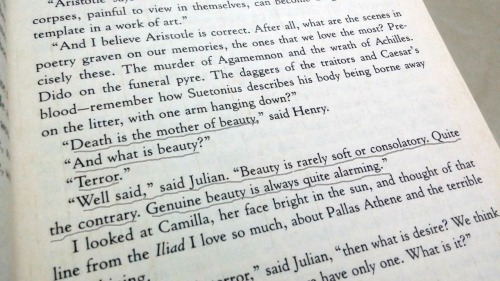The Secret History: Allure of the Elite
A Look into Identity, Morality, Beauty, and Elitism in 1980s Vermont
Starry summer nights, toasty bonfires, and isolated forests in the backdrop of a picturesque hillside town. These images are what immediately spring to mind whenever I think of Donna Tartt’s The Secret History. Set in Vermont, New England, in the glamorous eighties, the book exudes a warm, comforting feeling despite its chilling subject matter. This is in no small part because of Tartt’s unique storytelling. She has a way of inducing in her readers a sort of fever, a nostalgic longing for a time and place they have never experienced. Her descriptions of the countryside, town, and college campus where the novel primarily takes place, evoke such vivid and distinct imagery that it is hard not to fall in love with the setting.

Aesthetics: Dark Academia
The Secret History is also credited with kicking off and popularizing a very distinct style of interaction and fashion- Dark Academia. It became widely known as a social media aesthetic during the pandemic, when thousands of students like me, bored with the monotony of online classes, turned to an idealized fantasy of college education. The fancy Hogwarts-style buildings, brown and beige colour palette, and romanticized visuals of studying personally drew me in more than I would care to admit.
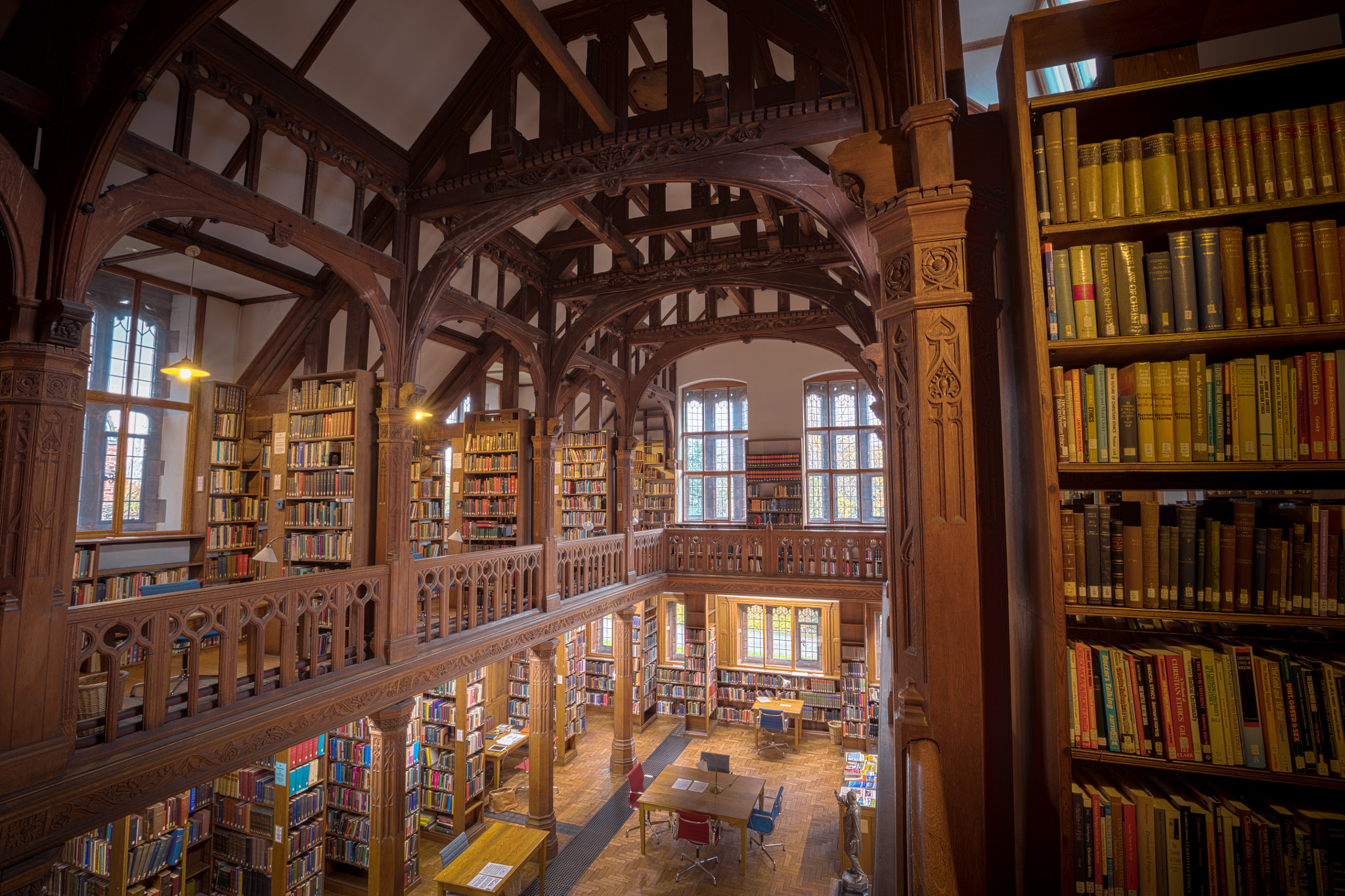
As someone who has always enjoyed reading and studying in general (particularly the humanities and social sciences), especially when done independently and not as part of a structured curriculum, Dark Academia appealed to me a lot. It was a sexy, thrilling new experience, a new way of applying my over-imaginative tendencies. But as all good things do, it came with its own issues. We’ll be reading about it in more detail below.
Plot and Background
Donna Tartt’s The Secret History revolves around a group of friends who meet at Hampden College, taking classes together as classics students. The central conflict of the novel has to do with when the friend group decides to murder one of their own, and has to deal with the consequences afterwards. Hampden College is based on Tartt’s alma mater, Bennington College, also located in Vermont, and she began writing the novel itself while she was still a student there.
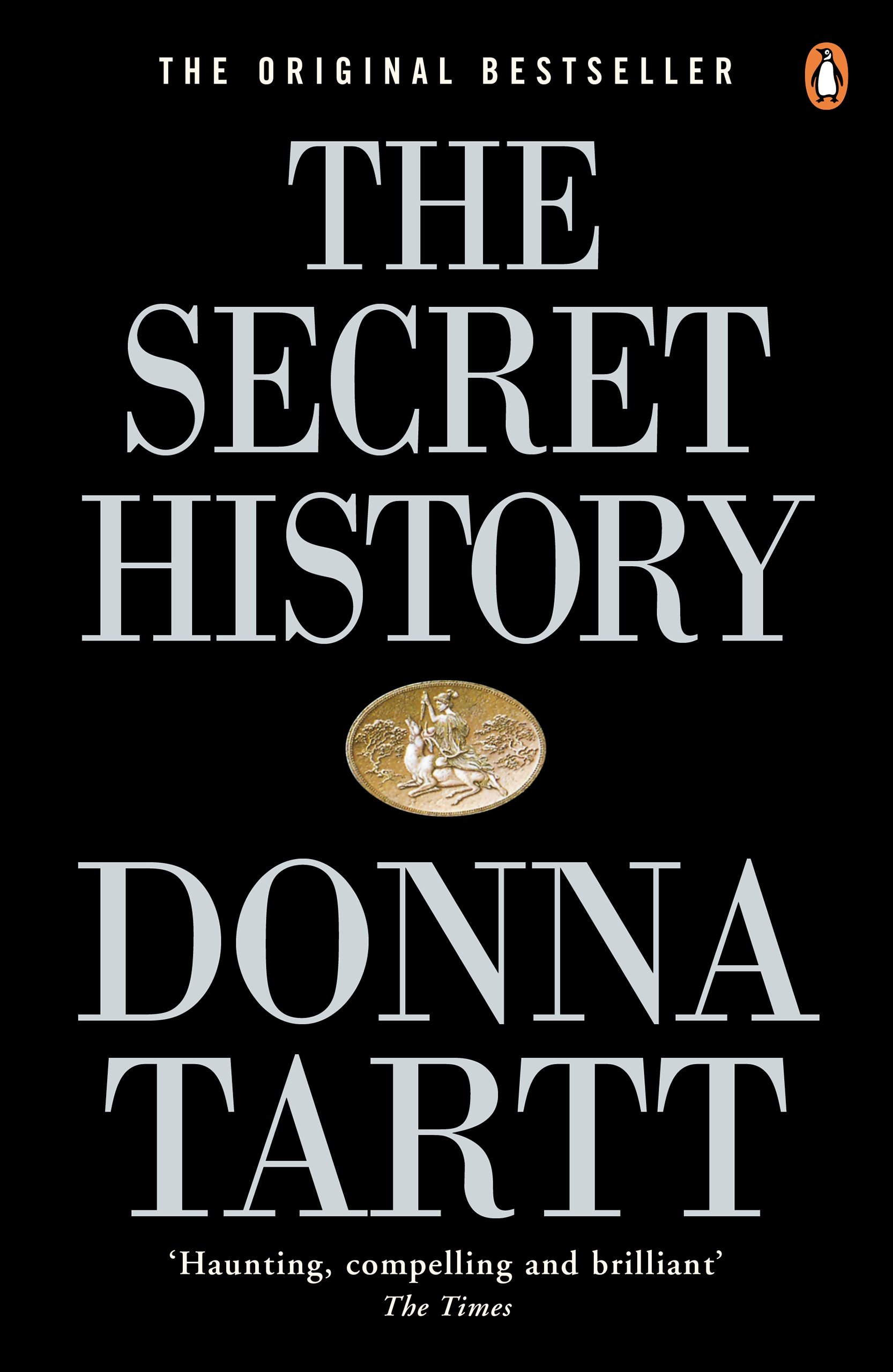
Our protagonist in the story is Richard Papen, a California-raised youth looking to get away from his roots. From the very beginning, we get a glimpse of the issues Richard has with his identity. Unlike his peers, Richard does not come from money. His relationship with his parents is functional, but strained. He comes to Vermont to get a fresh start. He wants to study literature but is then fascinated by the exclusivity of the Classics department of the college.
Julian Morrow is the Classics Professor at Hampden, and runs a tight ship. With a notoriously small class size of five, he admits students only after a thorough personal evaluation, and even rejects Richard initially before admitting him into the elusive class. It is there that Richard strikes a friendship with his classmates, and the main events of the novel start to unfold.
The Classics Group : The Good, The Better, and The Fabulous
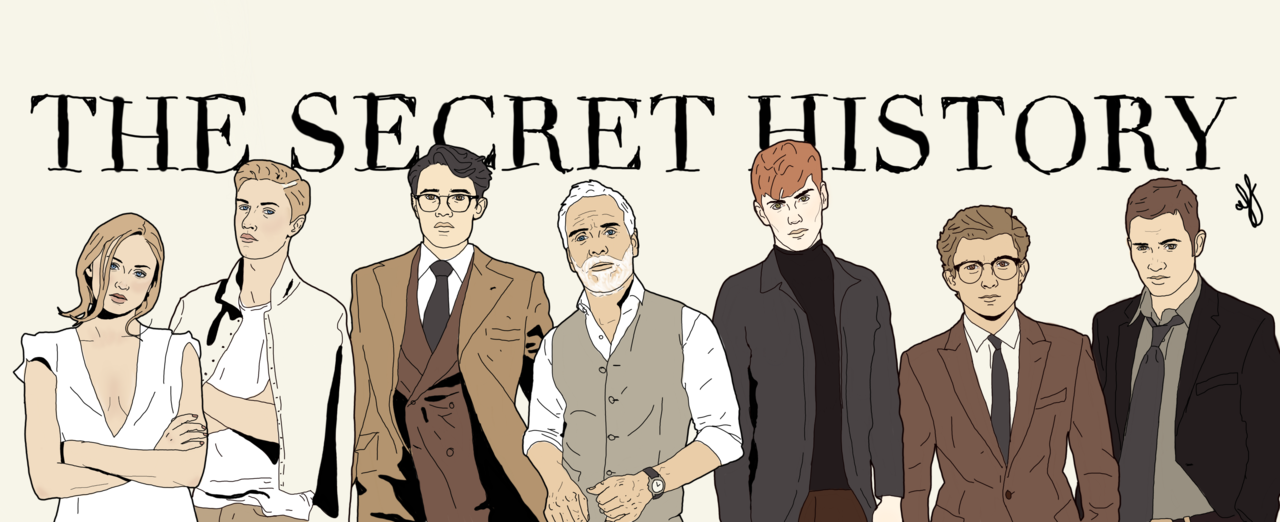
As we are introduced to Richard’s friends, it is clear that we are meant to revere and be enamoured by them. They are all described as fascinating, unapproachable personalities, almost like Greek Gods. The most intriguing of them all is Henry Winter. As we come to know later, Henry is the de-facto, unspoken leader of the group. He wears wide steel-rimmed glasses and dark English suits and, presumably, is a man of few words.
In sharp contrast to him is the snappy and talkative Edmund ‘Bunny’ Corcoran. In the beginning, before the rest of the group warms up to Richard, it is Bunny who most frequently comes up and talks to him. The others include blonde fraternal twins Charles and Camilla Macaulay, and a well-dressed, exotic redhead from Boston called Francis Abernathy.
All of them- except for Richard are obscenely wealthy. Even Bunny, whose family is all but flat-broke, still carries about him a sense of refinement one can only associate with rich people. (To call Bunny ‘refined’ unironically, however, would be to risk offending a lot of characters in the novel, but I digress.) Thrust in this new world and surrounded by this new breed of people, our protagonist starts feeling a little insecure. So he comes up with an entirely new backstory for himself. He is careful not to reveal too much and is purposefully vague whenever talking about his family.
Of course, this does not fool his peers. Their teacher, Julian, seems quite satisfied with Richard’s explanations, however, and that’s all that seems to count. Julian was something of an enigma in Hampden on account of his unique teaching methods and the fact that he didn’t allow his students to take part in any other classes except his own.
The students themselves don’t seem too concerned with going out of their way to form friendships with anyone, either. They are described as being perfectly content within their own little circle, discussing classical literature and poetry, talking amongst themselves in languages long dead. Their isolation from the rest of the world is revealed to us first-hand in the following paragraph.
“Once, over dinner, Henry was quite startled to learn from me than men had walked on the moon. “No,” he said, putting down his fork.
“It’s true,” chorused the rest, who had somehow managed to pick this up along the way.
“I don’t believe it.”
“I saw it,” said Bunny. “It was on television.”
“How did they get there? When did this happen?"”
It is almost comical how a group of highly intelligent, refined twenty-somethings can be so engrossed within themselves that they are completely indifferent to the happenings of the world and even ignorant of commonplace knowledge. The only exceptions to this are Richard and Bunny, who seem to have at least a few friends outside the core group, and often go out to parties or campus gatherings throughout the course of the novel.
In spite of being so ridiculously out of touch with the world, the Classics group (minus Richard and Bunny) still manages to maintain a facade of superiority at Hampden College. They are the crème-de-la-crème, the untouchable elite. They don’t associate with anyone but themselves, and more importantly, they don’t want to. It seems at times that they even mock the interests or pastimes of the other students, all with a wry chuckle or a knowing smile. This is where we approach the second theme of the novel – elitism.
The Not-So-Fabulous Intellectual Gatekeeping

As mentioned previously, Tartt’s novel was the inspiration for Dark Academia. Consequently, its characters also came to be known as the quintessential ‘Dark Academia’ characters. The only problem? The characters in The Secret History are all sort of... awful. This is not to say that they are poorly-written; they are just...not the sort of people you would want to be your friends, no matter how charming they might seem initially.
And oh boy, if there’s one thing these characters are, it’s charming. Especially when coupled with Tartt’s beautiful yet melancholy descriptions, it isn’t hard to see why they appear irresistible. They are all tall, good-looking, broad-shouldered, able young people. (Not to mention all white). No matter the time or day, they are all sharply dressed, with a witty remark at hand, and obsessed with the Classical World.
Especially for Henry, anything not related to the Classics is simply not worth studying. He is often lost in his books, and Richard also seems to note that perhaps someone like Henry was never meant to be born in the Modern Day. Of course, there’s nothing wrong with longing for a never-before-seen time or place, or with studying ancient languages and philosophies. There’s also nothing inherently wrong with doing so just to feel superior to your peers, which is what the friend group likely does. Of course, they do have an unquestionably genuine interest in the Classics – it would be impossible to deal with so demanding a subject otherwise- but they also seem to take a perverse pleasure in turning their nose up at the plebs beneath them.

There could be various problematic elements here to grasp – ranging from the Eurocentric focus of the Classics discipline as a whole (although Henry is also very knowledgeable about Eastern languages like Persian and Sanskrit), all the way to the shockingly morbid worldview of the students themselves. What Tartt chose to focus on, however, was the dangers of academic elitism and isolation for everyone involved. When you let your knowledge and grades and an arbitrary ‘smartness’ distinguish you from your peers, you will go to great lengths just to maintain that distinction.
So it is not surprising how even with their unhealthy habits and sleep schedules, the Classics students still manage to keep up their pristine appearances. In almost every page, someone is smoking a cigarette, or downing a glass of whiskey, or doing Coke or popping pills. There is probably not a single character in the novel who hasn’t used at least one substance or intoxicant. This is not to say that drinking or smoking is necessarily bad (although they are. Don’t do drugs, kids.), but the sheer frequency of it is troubling, to say the least.
Another factor is the obsession with perfection, which is more evident in the modern Dark Academia trend than it is in the novel itself. When people forego sleep and food just to get their homework turned in or to complete their assignments, it’s a sign that something’s wrong. You’re either managing your time wrong, or you distracting yourself with workaholism.
So it is clear that the Classics group has got issues. Although Richard is a very unreliable narrator, he himself acknowledges his faults in this regard – he admits that what initially drew him in into the friend group was their charming, exclusive nature. By the time he realised what he’d done, it was already too late. He was in too deep.
The Classics Group: Antithesis
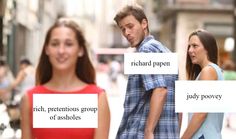
What do we learn from here, then? What was Tartt trying to convey? Perhaps that we should take care not to judge people by their appearances. No matter how perfect or respectable they seemed, Richard and his peers were deeply dysfunctional. This was evident as when the story progressed and things began unraveling, they all cracked one by one. A web of alcoholism, drug issues, incest, murder, and a general disregard for human life revealed the ugliness lurking beneath.
On the flip side, the other students in and around the campus, who Richard described as loud, tasteless, and annoying, seem more genuine in retrospect. People like Judy Poovey, who went out of her way to help Richard and check up on him on multiple occasions, are the sort of people you would want to be your friends, no matter how ‘Californian’ they might be. Even with people like Cloke Rayburn, Bunny’s druggie friend, at least you knew what to expect. He never pretended to be something he was not (save in front of the cops).
The Classics group, in contrast, was disingenuous and outright malicious at times. They hid things from each other, first from Richard and Bunny, then from Bunny, and then from each other. The novel ends with so many unresolved questions and issues among themselves that it is hard to believe they were even once friends.
Henry, Bunny, and Friends: The Downright Ugly
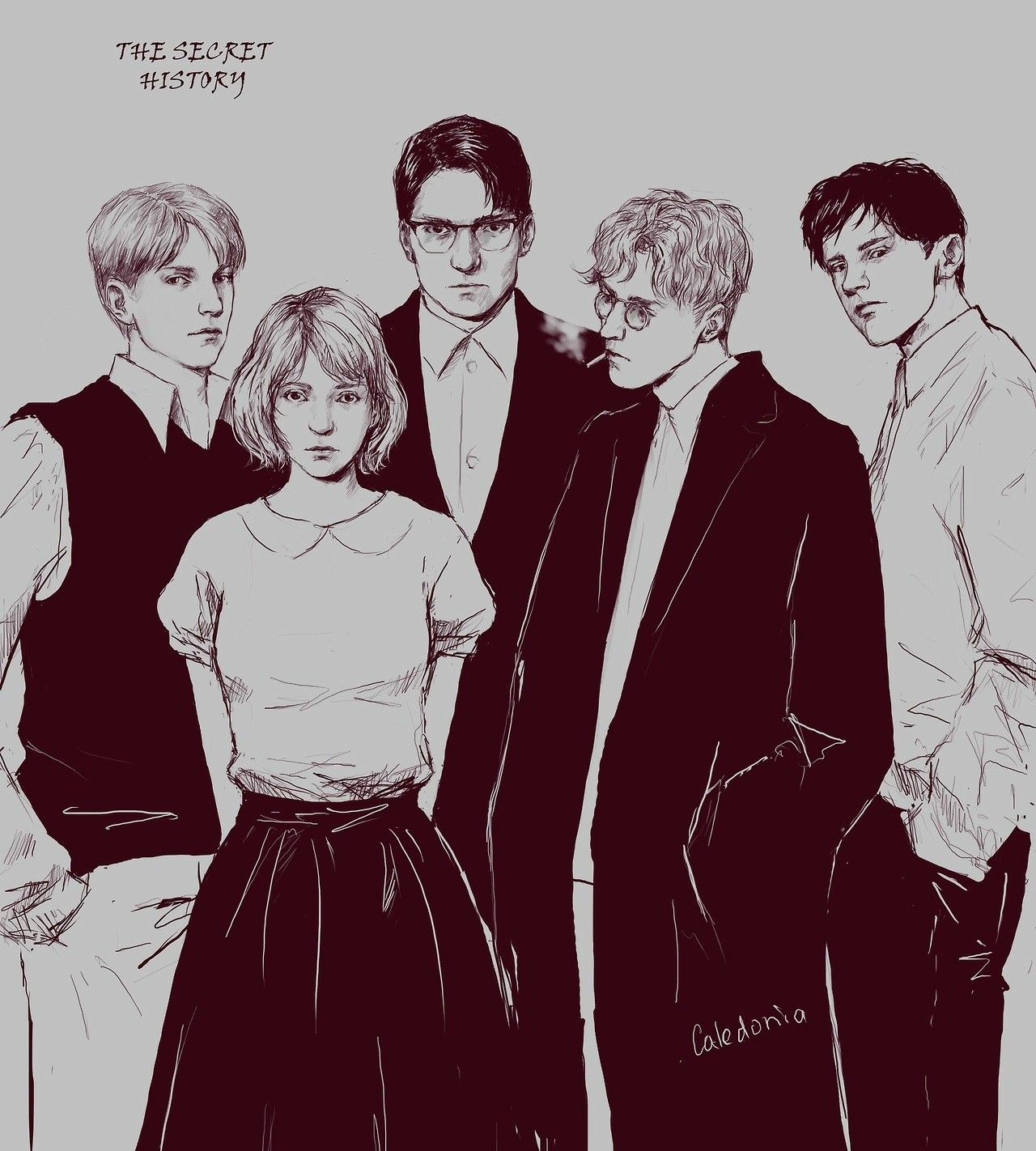
And of course, the central conflict of the book revolves around their callousness and general disregard for human life. The root of this can possibly be found, again, in their isolation from society and intimacy with each other. What seems odd and unnatural to the average Joe seems mundane to them. It is a testament to Tartt’s writing that the reader can find oneself, at times, agreeing and sympathizing with the warped worldview of the characters.
A prime example of this is when Richard is describing Bunny’s various microaggressions against the rest of the group. How he annoyed them, ticked them off, kicked at their sore spots, and was downright hostile in some instances. Add to this the Italy trip where Bunny was (allegedly, as we received only Henry’s version of events) an entitled brat behaving insufferably. Without even noticing, the reader inculcates an aversion towards Bunny, but the final leap is yet to be made.
When Henry first proposes the idea of murdering Bunny, it is introduced almost as a normal progression of events, as if killing your friend is the most natural thing to do when he’s being an annoyance. Of course, Richard is disturbed, but not aghast. He doesn’t commit to the idea but is not repulsed either. The others show some restraint as well. Charles, most noticeably, has an emotional reaction to the thought of murdering his classmate. Henry, in contrast, is far more dispassionate and detached. He is more concerned with Bunny’s unpredictability than with Bunny himself. And if killing Bunny manages to quell that unpredictability, so be it.
Slowly but surely, even the reader comes on board with the idea of having Bunny off-ed. The dozens of paragraphs in which Bunny insults and emotionally harasses his peers are very clearly meant for us to become disillusioned with him. Even today, I can’t go back and read those pages without wanting to strangle Bunny with my bare hands. Yes, he was that bad.
Taking into account the reactions of the group, one can assume that they were not entirely devoid of morals. The guilt of killing Bunny wouldn’t have eaten them up otherwise. It was just that their sense of self-preservation was orders of magnitude stronger than their sense of morality. The scary thought is, pushed far enough; perhaps the same is true for all of us. I, for one, wouldn’t like to find out.
Beauty is Terror
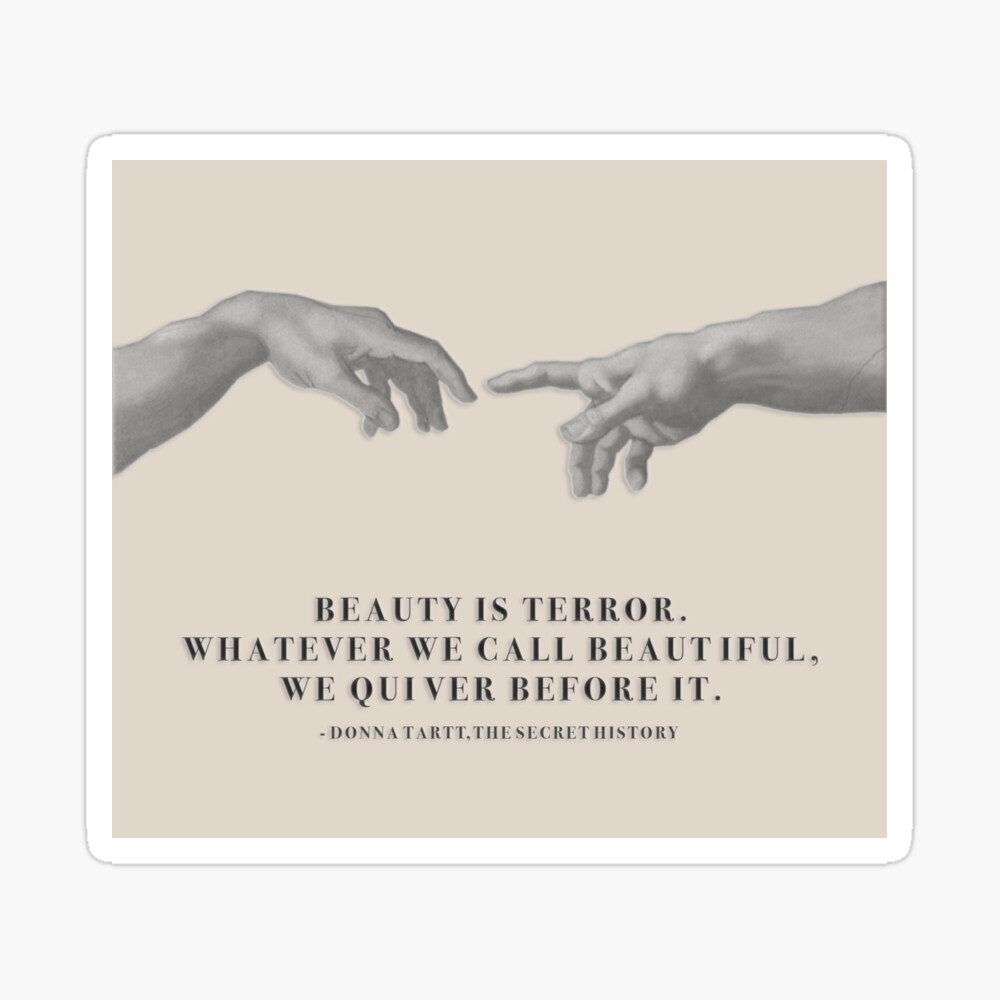
As we approach the end, let us address the final and perhaps most important theme of the book – the idea of beauty. Tartt’s rich, atmospheric prose constantly reminds the reader just how beautiful and picturesque the town of Hampden is. Her unforgettable descriptions of the campus yards during spring, the cold lonely nights of winter break, and the scenery of the town, in general, induce in the reader images of a picture-perfect New England hill spot.
This haunting beauty of Hampden is compared with the gloomy urban-gray atmosphere of Plano, California, Richard’s hometown. Wanting to shed his past and start anew, Richard is intensely attracted to the greenery, the sights and sounds of Hampden. He is further attracted to the beauty of the Classics Department of the college, and this attraction leads him down a rabbit hole darker than he could have ever imagined.

This idea of beauty, superficial beauty, to be exact, is directly referenced by Tartt several times. The first time, it is their professor, Julian, who introduces the topic.
“It's a very Greek idea, and a very profound one. Beauty is terror. Whatever we call beautiful, we quiver before it.
He describes beauty as terrifying and unnerving, as an idea deeply meaningful and profound. Throughout the novel, he plays around with the idea of perfection: beauty without any blemishes. He plays out his Socratic fantasies, teaching an elite circle of highly intelligent young men and women, disseminating his ideas and opinions to them. However, when faced with the tiniest little crack in his imagined utopia, he crumbles under the pressure.
With Richard being a self-professed unreliable narrator, we really have no unbiased perspective on what Julian Morrow really was like as a person. Was he the kindly, benign god-saint Richard thought him to be, or he human just like everyone else? His actions seem to suggest the latter. No matter how philosophical a person might get with his words, in the end, cold hard reality helps distinguish who’s a poser and who’s not. While Julian might not have been a poser in the strict sense of the word, he did abandon the kids to ensure his fantasy of beauty and perfection remained undisturbed. It’s not exactly easy to think of a person like that as a god-saint.
The second reference to beauty finds its way near the end of the novel. Georges Laforgue, an otherwise minor character, mentions it in passing, but the lines have a profound impact on the overall theme of the novel as well as on Richard’s disturbed mental state.
“There is nothing wrong with the love of Beauty. But Beauty - unless she is wed to something more meaningful - is always superficial.”
The oh-so-perfect friend group Richard aspired to get into was just that – superficial. Behind their facade of elitism, snobbery, and pretentious Greek poems lay secrets so ugly they were enough to make one weep. This is not to say, of course, that the study of Classics is inherently elitist or pretentious. Although the discipline is highly Eurocentric, there is nothing wrong with the appreciation or fascination of the Classical World and all that is associated with it.
Likewise, there is nothing inherently wrong with dark academia, or with wearing clothes or practising habits associated with that aesthetic. What is important is that one carries forward the essence or the spirit of it, and not just be swayed by outward appearances. In the end, the only lesson Richard could perhaps have truly learnt was the appreciation of ‘beauty’, beauty which runs deep and holds true, beauty not just for the sake of being beautiful, but for the sake of providing meaning and value to others.
